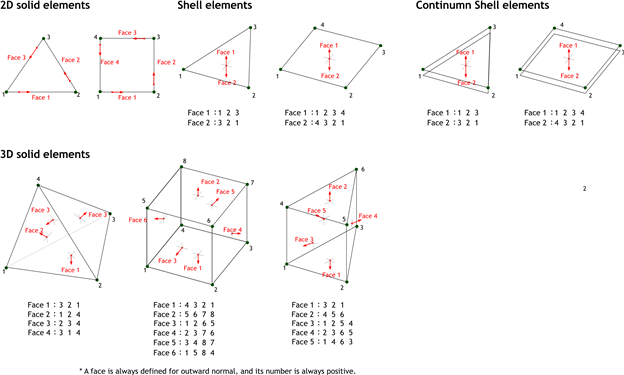9. Surface
The surface command is specified using *Surface which is an assembly of elements' faces. Surface is used to define load , constraint, etc. Each surface must have a unique name, and duplicate names are not allowed.
*Surface
Define surface by element face
*Surface, Name=name
faceId@target, surface, ...
...
Keyword line
- Name=name: Name of surface
First dataline and subsequent datalines
- faceId: Number specifying the face of the element (optional, default 1). Defined based on the element type, with an index starting from 1.
- target: Target element number, elset, or element pattern (required). The element number pattern is in the form
start:end:spacing, andspacingcan be omitted if it is 1. - surface: Surface to be added (all faces that make up the surface will be added).
Defines a surface composed of the faces of elements. The element face is selected and specified as shown in the diagram below.

Fig. 9.2-1. Face of elements
Note
When composing a surface with shell elements, the surface is defined based on the nodes that define the shell. That is, even if the shell has thickness, the front and back faces exist in the same location except for their orientation. Since surfaces are the reference for applying loads and boundary conditions, extra caution is needed.
Example
*Surface, Name=slab
5@11981:12000
*Surface, Name=L1
1@upperface, 2@100, 2@200, 1@100:200:10, slab